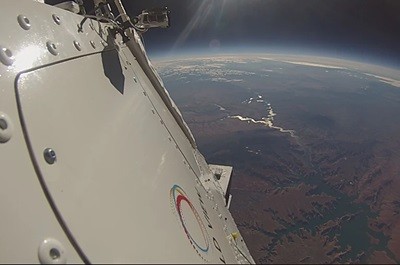
Devices (artist’s illustration) kept aloft by sunlight could take sensors into an understudied layer of the atmosphere.Credit: Schafer et al. Nature (2025)
Theory and mathematics said his device would fly. But Ben Schafer was still pleasantly surprised the first time he flipped a switch and watched the centimetre-square device his team had built levitate, if only for a moment before flipping over.
It was a proof of concept for a design that has been published today in Nature1. One day, it might enable swarms of tiny, unpowered flying saucers and other devices with no moving parts to explore the highest reaches of Earth’s atmosphere ― near the edge of space ―using sunlight alone to remain aloft.
“You don’t really believe it until you see it,” says Schafer, a physicist at Harvard University in Cambridge, Massachusetts.
Spin class
To design their flying saucer, Schafer and his team capitalized on a quirk of physics that was discovered in the late 1800s. The idea was encapsulated in a weathervane-like device encased in a low-pressure chamber that will spin if exposed to light, without the input of any other force. The chamber apparatus, called a Crookes radiometer, is now a classic science-education device.
What is new is the design. Schafer and his team used modern nanofabrication techniques to create an ultralight two-layered wafer. The layers, which are made of aluminium oxide, are roughly 1,000 times thinner than a typical human hair and are connected by narrow filaments. The top layer is transparent, allowing sunlight to shine through it, and the bottom layer is coated in chromium, which absorbs sunlight.
Scientific ballooning takes off
When gas molecules hit the bottom layer, they absorb some of its heat and then bounce off the device with more momentum than gas molecules bouncing off the colder, top layer — an effect that pushes the wafer upwards. The conditions for such reactions can be found in the mesosphere, the layer of the atmosphere some 50 to 100 kilometres above Earth’s surface.
Importantly, Schafer’s device includes a new feature: the two layers are perforated with holes that allow gas molecules to move from the cold and transparent side to the hot chromium side, creating lift that is similar to that created by a helicopter’s whirring rotor, says Igor Bargatin, an engineer at the University of Pennsylvania in Philadelphia who has pioneered work on similar devices.



